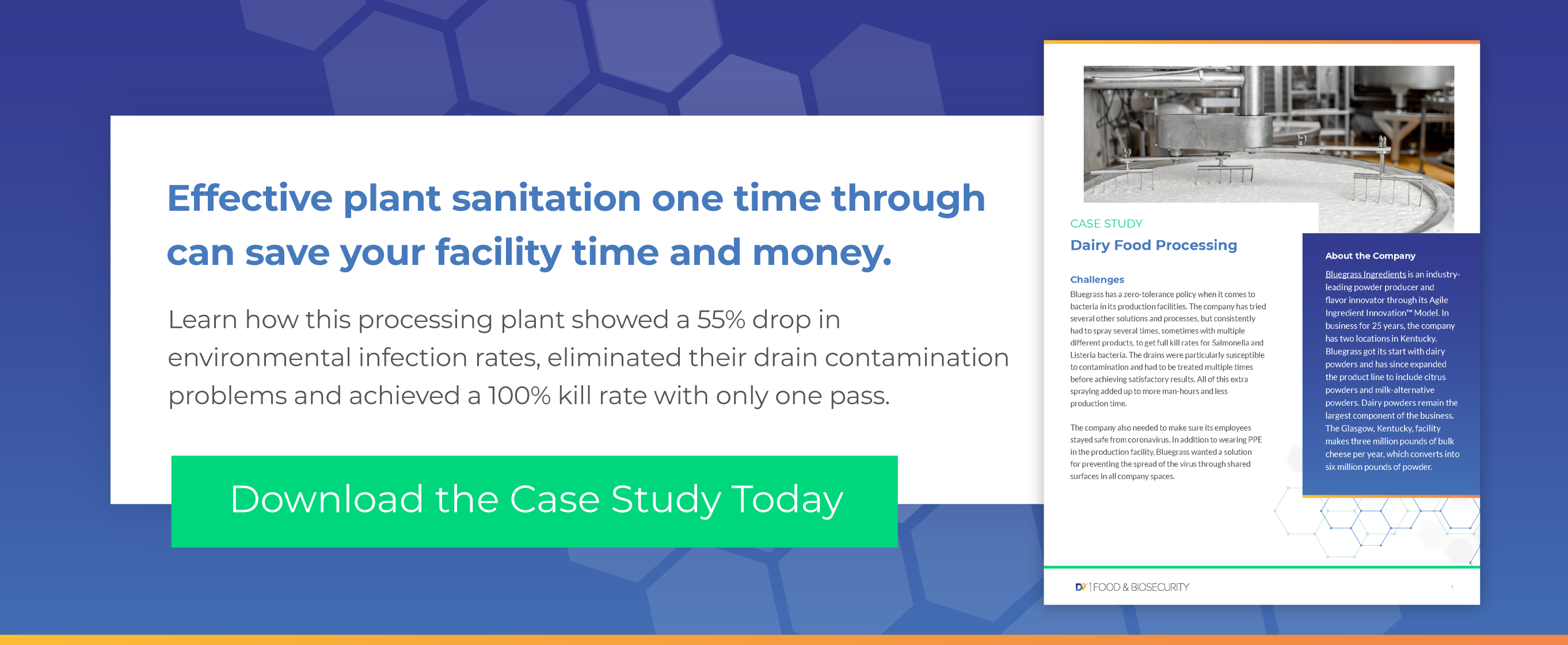Pigs may be notoriously dirty animals, but wallowing in mud is, in fact, a way for them to stay healthy by preventing overheating. However, when a sty is not properly cleaned, this otherwise acceptable wallowing could lead to illness and disease. For hog farms, porcine disease can have dire effects, especially if it spreads among the herd and infects other animals.
The USDA’s Food Safety Inspection Service, the government body responsible for the safety of meat and poultry products, mandates that diseased animals must be separated before slaughter and then examined and destroyed. This safety measure is good for consumers, but can get expensive for hog farmers, especially when a virus spreads. Although it may not be possible to stop hogs from wallowing in cooling mud, it is possible to protect them from diseases, such as porcine epidemic diarrhea and African swine fever, through animal husbandry best practices and hog farm sanitation.
What Is PED?
Porcine epidemic diarrhea (PED) is a serious condition caused by a virus that is transmitted among hog herds. On the plus side, it does not affect humans or other animals. However, when an animal is infected with PED, it is often rapidly transmitted to other pigs. One reason for this is that the virus spreads via the fecal-oral route, and as the name suggests, an infected animal suffers from severe diarrhea. That natural tendency to wallow can become a serious health risk when the mud is contaminated with infected feces. Suckling pigs are particularly impacted by the virus, which can also have a major impact on a farm’s ability to grow livestock. One estimate indicates that a herd infection can result in 3-5 weeks of lost production.
PED emerged in the United States in 2013 and was closely tracked by the USDA until 2018. According to the American Association of Swine Veterinarians, PED was present in 39 states during that time. Although the 2013 outbreak is considered largely under control, PED still presents a risk to hog farmers, and preventive measures should be taken to avoid future outbreaks.
How Can PED Be Prevented?
Hog farm sanitation practices and biosecurity measures can help prevent the spread of PED and keep uninfected farms clean. Because PED can be picked up anywhere hog feces are present, not just on the farm itself, it is important to implement sanitation practices through the entire supply chain. Transportation of infected animals provides an opportunity for disease to spread, which is why trucks must be thoroughly cleaned and sanitized between trips.
Implementing sanitation practices at facility entryways and exit points also helps keep the virus at bay. This includes not only truck wash stations, but also boot washing, hand washing, and equipment sanitation. If PED is found on a sow farm, it is recommended that the entire herd be exposed to generate rapid herd immunity.
Use D7 for Hog Farm Sanitation
D7 is a disinfectant that kills bacteria and viruses at the DNA level. Used in a range of applications, it can be applied as a foam, fog, spray, or soak. On hog farms, the foam can be used to treat areas that are tough to address. For example, a timed foamer can be used at entryways to ensure that disinfectant is always present when personnel walk between zones. The foam can also be used with a mobile spray wagon to disinfect walls, ceilings, and other surfaces in pig collection points, truck storage areas, and on trucks and other mobile equipment.
Use the Right Equipment for the Job
Hog farm sanitation can help keep PED at bay, and it also helps prevent the spread of other porcine diseases. For example, recent concern about African swine fever has been met with discussions about how hog farmers can improve biosecurity. Different areas often require different types of treatment, and it’s important to have the right equipment for the job. When deciding which application methods are right for your facility, review the D7 Product Guide to understand all of your options.


